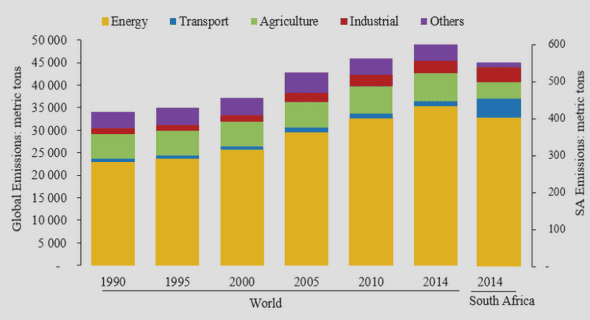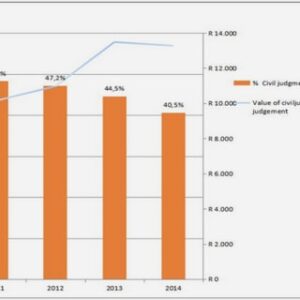(Downloads - 0)
For more info about our services contact : help@bestpfe.com
Table of contents
Introduction
1 Introduction to Continuum Mechanics
1.1 Motivation of studying fluids
1.2 The relative Perspective of Motion: Macroscopic and Microscopic
1.2.1 Lagrangian Frame
1.2.2 Eulerian Frame
1.3 Volume and Surface Forces: A Story of Tensors
1.3.1 Body and Contact forces
1.3.2 Compressible and Incompressible Fluids
1.4 Hydrodynamics and Rheology: a story of viscosity
1.4.1 Hydrodynamics: Study of Newtonian Fluids
1.4.2 Rheology: An Introduction To Non-Newtonian Fluids
1.5 Balance Laws
1.5.1 Mass Conservation
1.5.2 Momentum Conservation
1.5.3 Energy Conservation
1.6 Constitutional relations
1.7 Boundary conditions
1.8 Modelling : Scaling and Important Parameters
2 A Scope on the Thesis
2.1 Brief Historical Review on Modeling Gravity Driven Films
2.2 Shallow Water Theory
2.2.1 Shallow Water Theory From the Modeling Point of View
2.2.2 A Word On The Well Posedness Of Shallow Water Models
2.2.3 Contribution to the Thesis
2.2.3.1 Refined 2 and 3 Equation Models Using WRM
2.2.3.2 Bi-viscous Shallow Water model
2.3 Lubrication Theory
2.3.1 Lubrication Theory From the Modeling Point of View
2.3.2 Contribution to the Thesis
2.3.2.1 Bi-viscous Lubrication Equations
2.3.2.2 Existence Results for Some Lubrication-type Equations
2.3.2.3 Bingham Lubrication Equation Revisited
2.4 Existence Result for Degenerate Lake model for Bingham fluids
2.5 Dissipative Solutions for Oldroyd-B Fluids
II Newtonian Flows with Free Surfaces
3 Derivation Of Viscous Newtonian Shallow Water Models
3.1 Introduction
3.2 Preliminary System, Scaling and Main Results
3.3 Overview on the Momentum Integral Method (MIM) Justified in [1]
3.4 Overview on the Weighted Residual Method (WRM) Explored in [2]
3.5 Overview On The Three Equation Model Derived in [3]
3.6 A Revisit of the Three-Equation Approach
3.7 A 3-Equation Model for 2D and 3D flows Using the Weighted Residual Method
3.7.1 A 3-Equation Model for the 2D flow
3.7.2 A 3-Equation Model for the 3D flow
3.8 Numerical validation
4 BD Entropy and BF Dissipative Entropy
4.1 Introduction
4.2 The limit of a viscous shallow water model formally derived in [4] and justified in [5]
4.2.1 Formal limit
4.2.2 Mathematical justification
4.2.3 BF-entropy information include in the limit part of the BD-entropy
4.3 The limit of a viscous compressible system with a general drag term
4.3.1 Ansatz between n and m on the physical basis
4.3.2 Mathematical justification
4.3.3 Convergence of the BD-entropy
4.4 A more general framework
4.4.1 Limit problem
4.5 Appendix
III Bi-viscous Rheology: Lubrication and Shallow Water Equations
5 A Lubrication Equation for a Simplified Model of Shear-Thinning Fluid
5.1 Introduction
5.2 Mathematical model
5.2.1 Rheology
5.2.2 Scalings
5.3 Lubrication equation
5.4 Numerical illustrations
6 Bi-viscous Shallow Water Model
6.1 Introduction
6.2 Starting model, scaling choices and main result
6.2.1 Adimensionalized System and Boundary Conditions
6.2.2 Scaling and expansion
6.2.3 Main result – Shallow Water type systems
6.2.3.1 Comparison with Bingham model (6.1)
6.2.3.2 Comparison with Newtonian Model
6.3 Shallow-water equation derivation.
6.3.1 Main order profile and hydrostatic pressure constraint.
6.3.2 Calculating xz(0)
6.4 Conclusion
IV Degenerate Lake System for Bingham Fluids
7 On The Rigid-Lid Approximation of Shallow Water Bingham Model
7.1 Introduction
7.2 Functional spaces
7.3 Variational Inequality
7.4 Main Results
7.5 Newtonian fluids as a limit of Non-Newtonian fluids
7.6 Numerical Scheme
7.6.1 Semi-discrete scheme
7.6.2 Discrete scheme
7.6.3 When b ! 0
7.6.4 Boundary conditions
7.6.5 Simulation results
V Dissipative Solutions for Oldroyd Systems
8 Dissipative Solution for Oldroyd Systems
8.1 Introduction
8.2 Main Results
8.3 Dissipative solution for the Incompressible Oldroyd system
8.3.1 Modulated free energy
8.4 Appendix
8.4.1 System Setup
8.4.2 Free Energy of the Regularized System: A Priori Estimates



